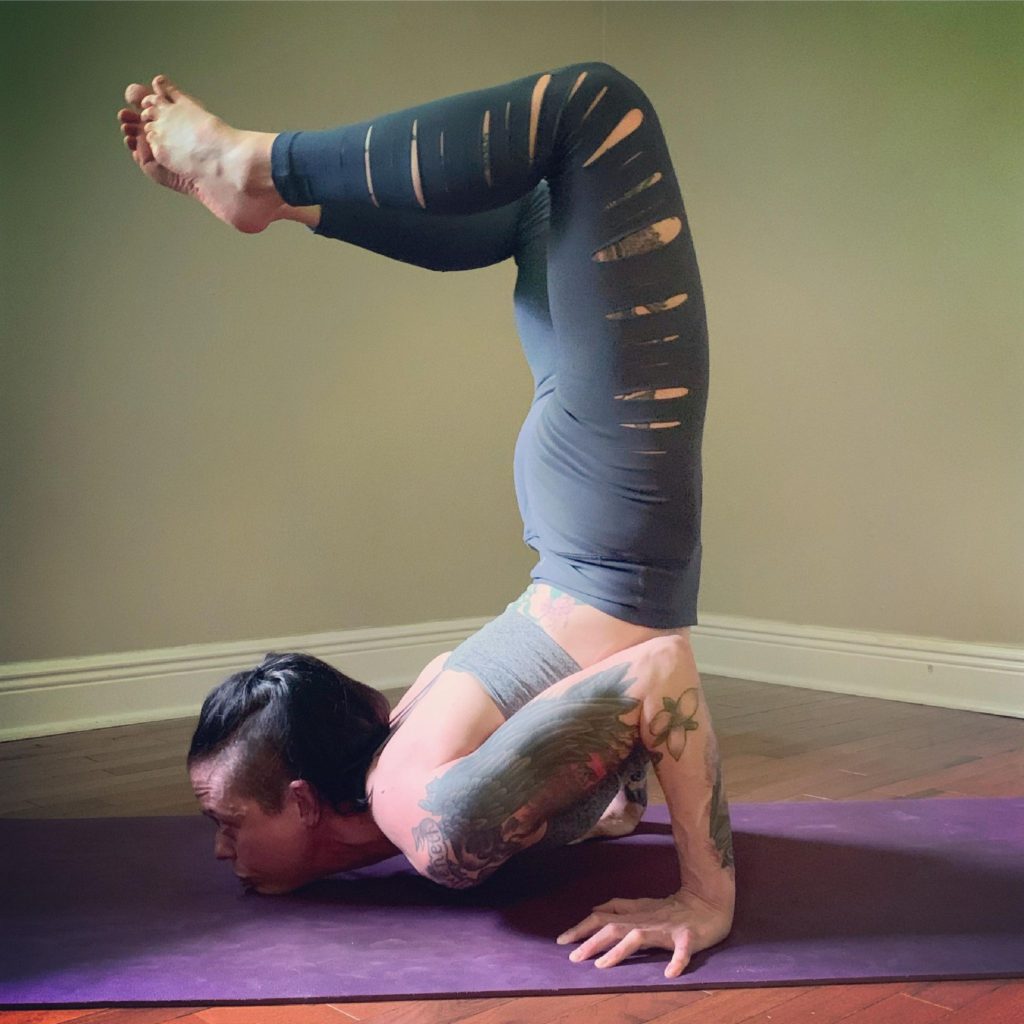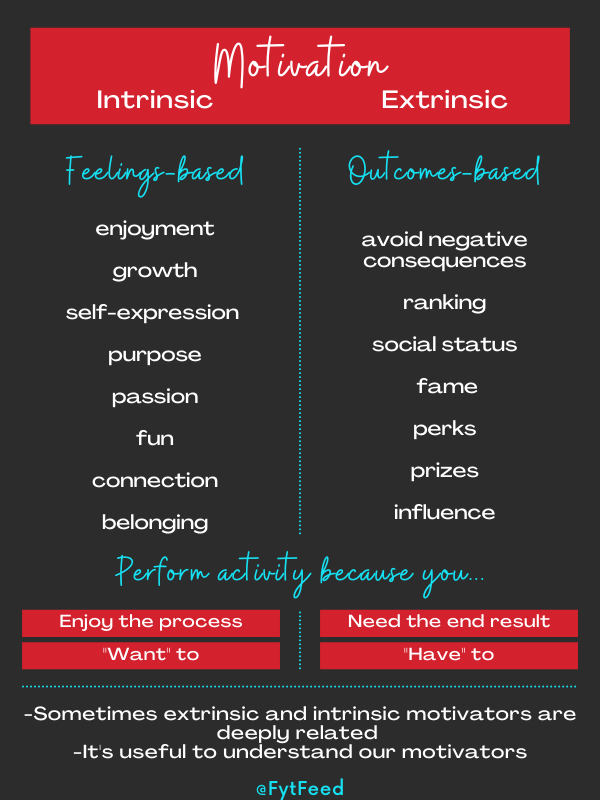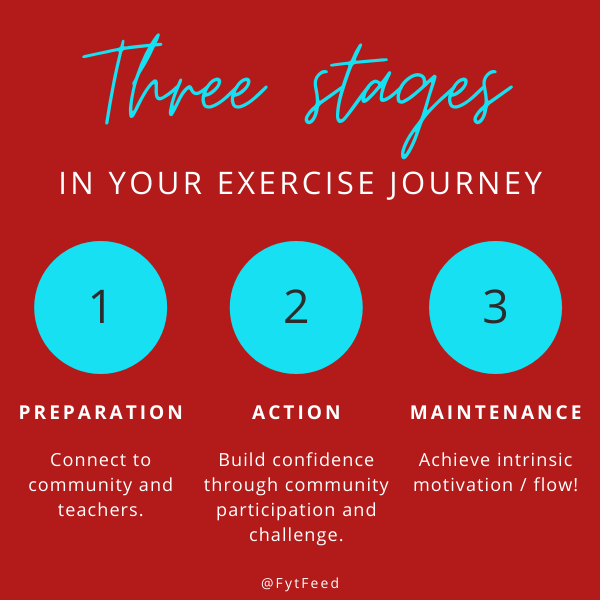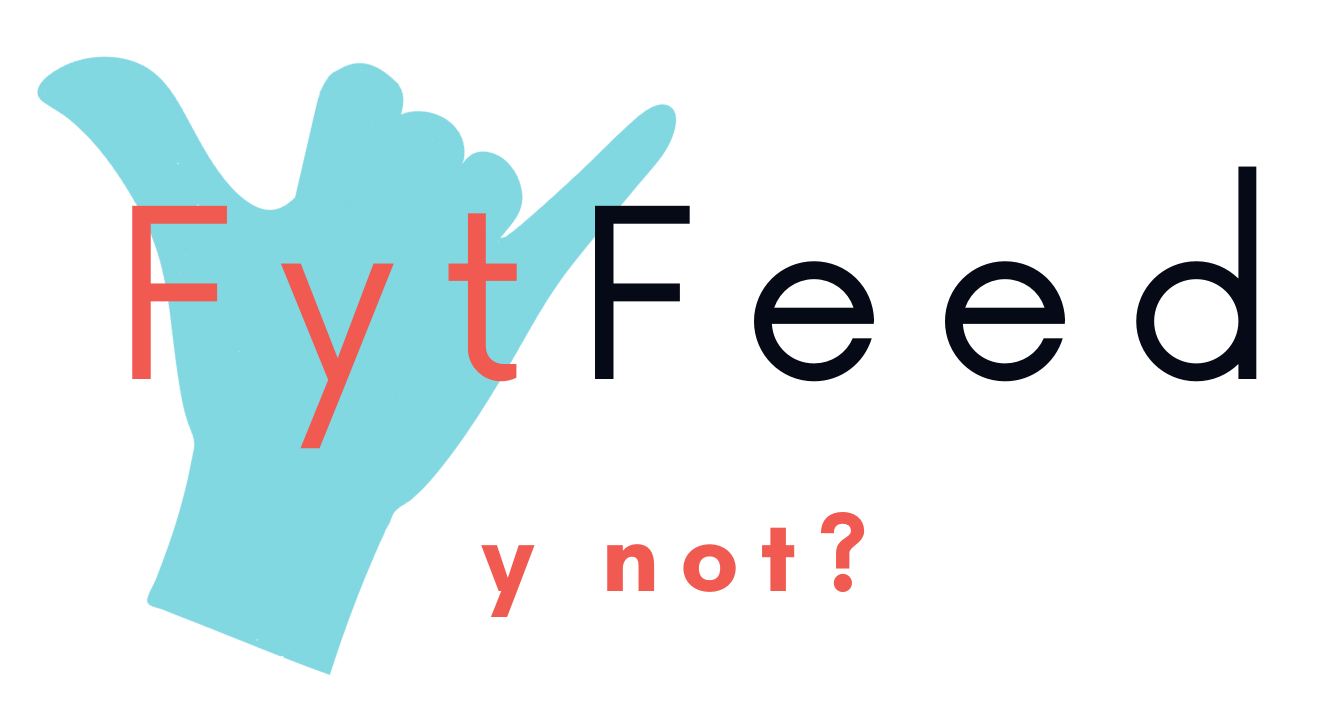Motivation
It’s one of the things we hear about the most when speaking to people about the barriers to fitness and active living. It’s hard to find and maintain motivation with so many other factors bidding for priority in our lives. “How do you stay motivated every day?” The simple answer: nobody wakes up feeling motivated every day. So… What drives people who stick with it? The key is finding our reasons WHY. (But let’s be real, this is FytFeed, so it’s our reasons Y.)
In an interview with Kelli Hansel Haywood, author of Sacred Catharsis, she described it this way:
"Your WHY outlasts and overrides motivation."
Kelli Hansel Haywood Tweet
For Kelli, her “Y” is the reason she makes the decision to be active each day, even when she doesn’t necessarily feel motivated. Co-founder Dennis Ashford’s Y sparked his active living journey and drove his desire to start FytFeed.

Photo of Kelli during her home yoga practice in Mayking, Kentucky.
The Breakdown: Types of Motivation
When it comes down to it, our “Ys” are our motivators, making it important to understand where motivation comes from and what it is. Motivation comes in two major forms called intrinsic and extrinsic. Intrinsic motivation is rooted from within—something personal. This is a powerful form of motivation that doesn’t come from obvious or quick external rewards but generates feelings inside you: the feeling of satisfaction in making progress, feeling like our best selves, or enhancing our sense of belonging. On the other hand, extrinsic motivation is based on external factors, like earning prizes or avoiding negative consequences.1
"Inspiration is motivation from the inside."
Abraham-Hicks Tweet
Both forms of motivation can be useful, and oftentimes activities that might appear to be externally driven are actually motivated internally. Studies show that intrinsic is the most influential form of motivation long-term when it comes to physical activity. However, well-internalized extrinsic motivators are extremely useful in the early stages of exercise adoption.2
What does this mean? All this is saying is that extrinsic and intrinsic motivation isn’t black and white, and they are often interconnected. For example, think about a scenario where the doctor tells someone they have to lose 20 pounds because they’re at high risk of developing diabetes. So, they start exercising to avoid that circumstance. I’d consider this a well-internalized extrinsic motivator because they also care about themselves and their loved ones enough to pursue being healthier after the doctor brought awareness to the circumstance. This health risk jump-started a fitness journey. People are motivated by all types of personal, yet external, reasons at the beginning, and these motivators develop and change over time.

Stages of The Journey
Studies show that intrinsic motivation is the most powerful influencer in turning exercise and activity into a lifestyle. According to psychologists, the experience of intrinsic motivation is culminated by three basic psychological needs:
- autonomy (feeling in-control)
- competence
- relatedness
In the beginning phases of our fitness journeys, it’s nearly impossible to feel competent or autonomous, and so finding the right supports goes a very long way. In one study, beginners did not show the same levels of intrinsic motivation as regular exercisers even after 6 months of physical activity.3 If you’re just starting out, we want you to recognize that Preparation is a stage of the journey that deserves recognition! In this stage, your Ys are gaining momentum. During this time, you might buy some gear or figure out what studios interest you. Connecting with people who share and/or value your Ys, who are rooting for you, and who are willing to teach you how to hit your goals is an excellent first step to move into the next stage, Action.

Adapted from the 5 Stages of Behavioral Change.
In the Action phase, while you are building your confidence and skill, social engagement and challenge is directly linked with greater participation in exercise. In this phase, relating with a community motivates you, in addition to the reason you initially started the activity.2 Connecting to a community will help you stay on the journey and transform your motivators as you gain autonomy and competence. Then, you’ll be ready to shift from the Action phase to the Maintenance phase of healthy living.
So, for our friend that started exercising to avoid the doctor’s omen… They start by joining a local hiking club. Overtime, the connections they build in the club start to become an equal, if not greater, form of motivation to stick with hiking. They start to lose weight, and they are less worried about the risk of diabetes. They still want to grow their friendships, and they are starting to get the hang of this hiking thing… As more time passes and their fitness level increases, they might start focusing less on surviving the hike and more on taking in the views surrounding them. At this point, they have learned about trails and safety gear through their community, they have friends to enjoy the experience with, and they might even start planning some of the club’s hikes—they feel in-control, competent, and connected. They’re probably going to continue hiking for a very long time, and the fear of diabetes is far behind them.
What if you’re in the Maintenance phase already? Does it get boring? Many of us live our lives seeking various forms of growth, and studies actually have shown that “intrinsic motivation is a lifelong psychological growth function.” To this effect, intrinsic motivation is closely related to “flow”, which many athletes, yogis, and experts experience as the following:
- Total absorption and non-self-conscious enjoyment of an activity
- Effort toward attaining just-manageable challenges to accomplish a series of goals
- Adjustment of action based on feedback about progress toward each goal4
Realizing and living out our Ys can take years, but once it becomes naturally imbedded, the final state of exercise or activity, Maintenance, often becomes our lifestyle. To me, the word maintenance can seem, well… high maintenance. In our upcoming blogs, we’ll learn that people who enter the final phase of exercise/active living aren’t burdened by their activities—their activities are a piece of who they are.
What Is Your Y?
If you don’t understand or feel the power of motivation when it comes to health, fitness, or active living, here’s another really helpful point:
“Motivation is often the result of action, not the cause of it.”
James Clear Tweet
The moral—get out there and watch your Ys develop mindfully over time, and utilize any form of support or motivation you can find as you go on the progression. For co-founder Katie Houston, her active living journey took over a decade, and her motivations grew and changed for the better over the years.
We are all in different stages of the journey, and we are all continually growing. FytFeed is kicking off an entire blog series called “What’s Your Y” to explore people’s motivators at different stages in their fitness journeys, inspire greater purpose in our activities, and have fun learning more about what drives our community. Let us know what your Ys are in the comments below!
References
- Cherry, K. 2019 https://www.verywellmind.com/what-is-intrinsic-motivation-2795385#citation-3
- Teixeira, P.J., Int J Behav Nutr Phys Act, 9, 78, 2012, doi: 1186/1479-5868-9-78
- Rogers, W.M. et al, Psychology of Sport and Exercise, 11(5), 378, 2010 https://doi.org/10.1016/j.psychsport.2010.04.007
- Di Domenica, S.I., Front Hum Neurosci, 11, 145, 2017, doi: 3389/fnhum.2017.00145
